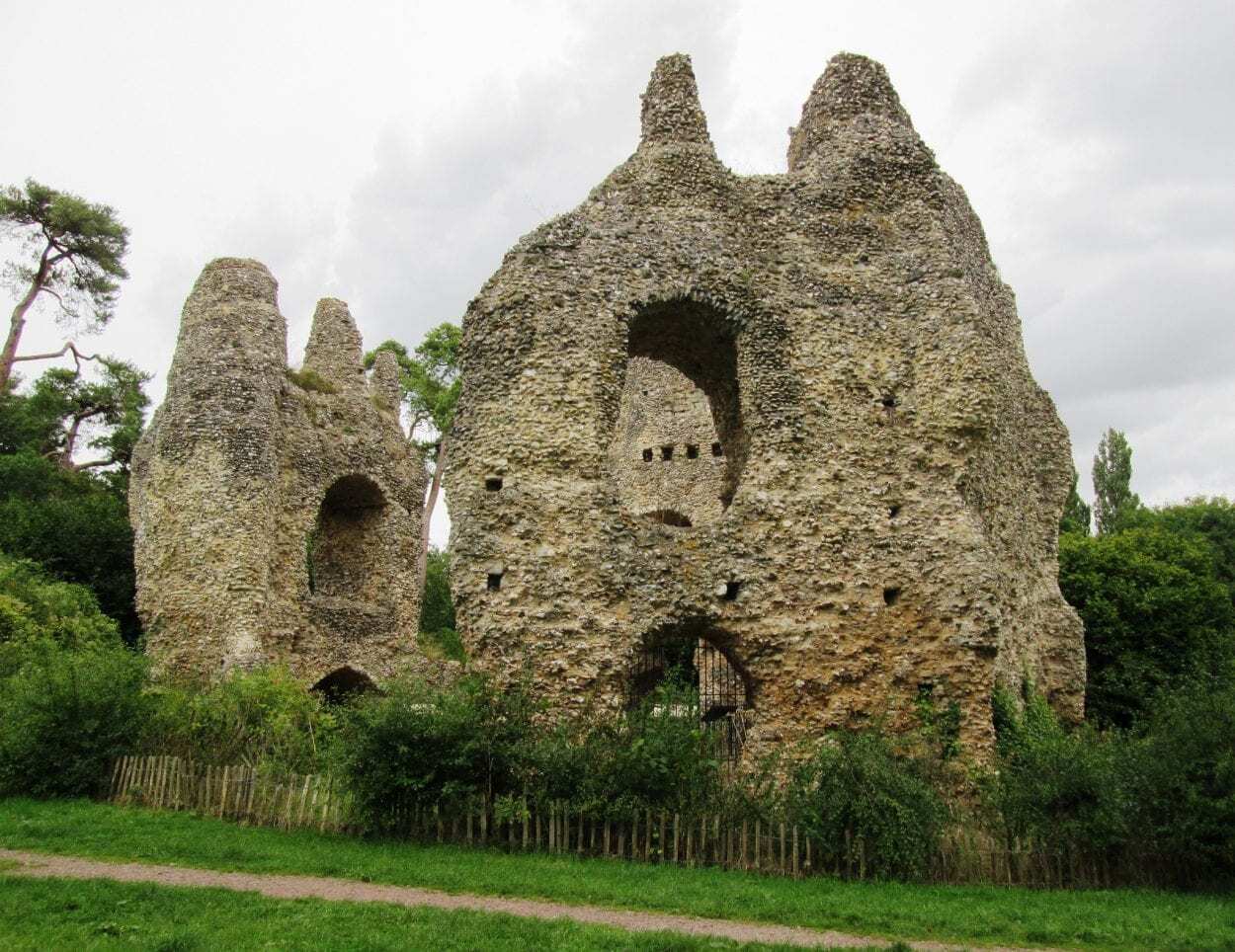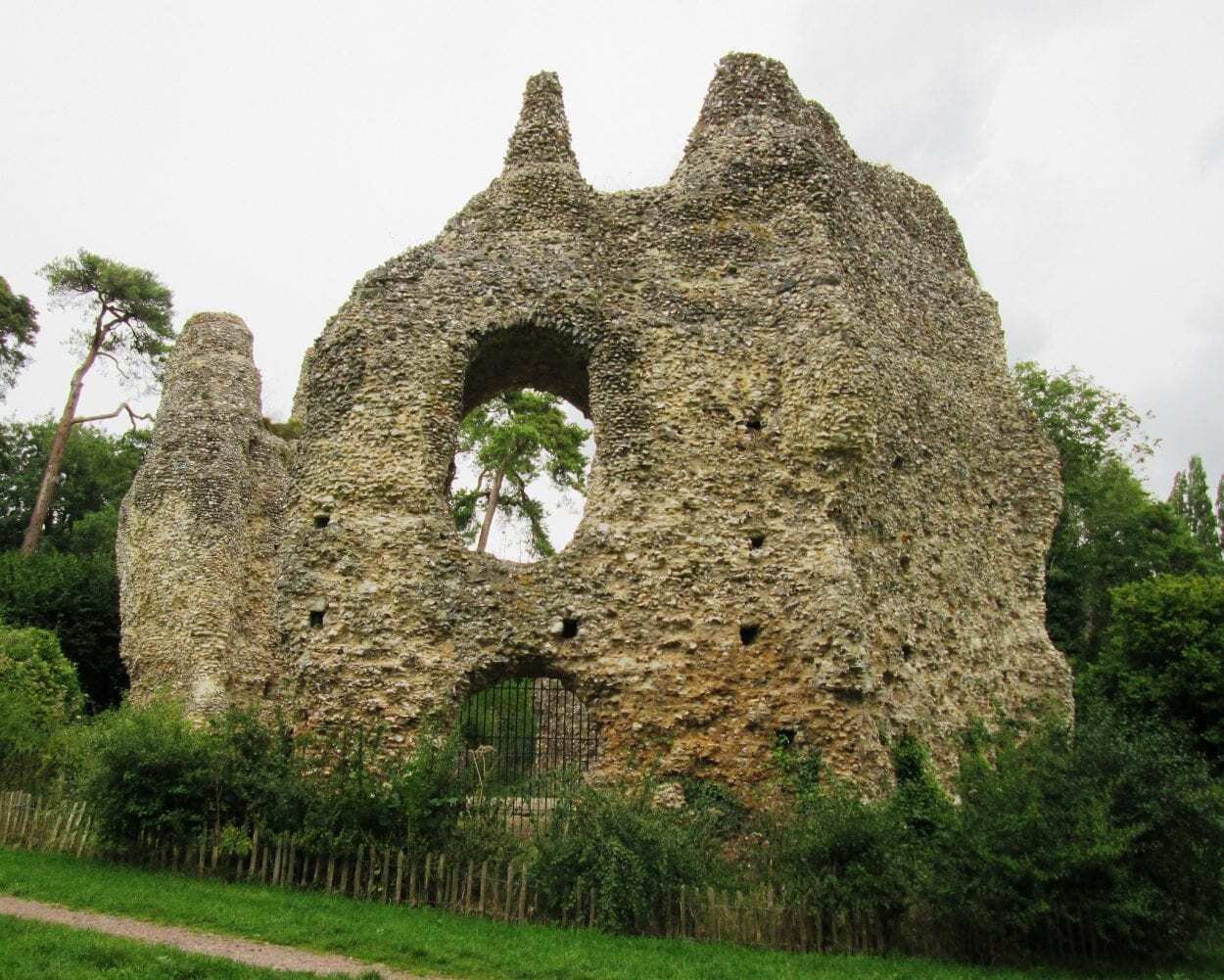Odiham Castle, also called King John’s Castle are the historic ruins of a fortress built by King John, located near the village of Odiham in the United Kingdom.
According to historical records, John began construction of Odiham Castle on a site covering 20 acres in 1207, at a cost of around £1000 (equivalent to £1,484,600 by modern monetary value). The castle consisted of a two-storey keep standing in one of two contiguous moated enclosures, with a third enclosure to the southeast and a domus regis or king’s house.
John was an infamous monarch, often identified in the folktales of Robin Hood, which arguably drew inspiration from the life of Fulk Fitz Warin, a historical 12th-century outlaw, nobleman, and enemy of John.
Nicknamed “John Lackland” (due to him never being expected to inherit significant lands or wealth), John attempted a rebellion against the administrators of the kingdom whilst his brother King Richard I was crusading in the Holy Lands. When Richard died in 1199, he left no legitimate heirs and John succeeded to the English throne as the only surviving son of King Henry II of England and Duchess Eleanor of Aquitaine.

The success of John’s reign is contested, his judicial reforms had a lasting effect on the English common law system, but his fiscal policies and treatment of England’s nobility led to a rebellion by many of his barons.
In 1215, it was from either Odiham or Windsor that King John rode out to Runnymede, where he met the leaders of the baron’s rebellion and agreed to the conditions of the charter of the Magna Carta (described as “the greatest constitutional document of all times”).
Neither side stood behind their commitments, and the charter was annulled by Pope Innocent III, leading to the First Barons’ War and the castle being placed under siege by the French. The Odiham garrison surrendered on the 9th July 1216, with John contracting dysentery and subsequently dying just a few months later.

Odiham Castle was completely rebuilt post the Baron’s War and was granted to John’s daughter Eleanor by his son King Henry III. Eleanor married Simon de Montfort, who later rebelled against Henry, resulting in Eleanor’s exile and the castle being confiscated by the crown.
The castle would yet again be embroiled in rebellion when the Despenser family (which held the title of Constable of Odiham Castle) stood against Roger Mortimer and Queen Isabella of France, the wife of Edward II who was forced to abdicate in favour of his son Edward III.
From the mid-14th century, the castle served as a prison, with King David II of Scotland being imprisoned at Odiham for over a decade after his defeat at the battle of Neville’s Cross.
In later centuries the castle served as a hunting lodge, but by the 17th century was in decay and turned to ruin.
Header Image Credit : BabelStone – CC BY-SA 3.0





